What Is Color Correction vs. Color Grading in Videos
Color is one of the most powerful tools in video creation, capable of setting the mood, guiding emotions, and making your visuals truly stand out. However, many creators struggle to understand the difference between color grading and color correction. Knowing the difference is essential to producing professional-looking videos. Fortunately, modern AI tools can simplify both processes, making it easier than ever to enhance your footage.
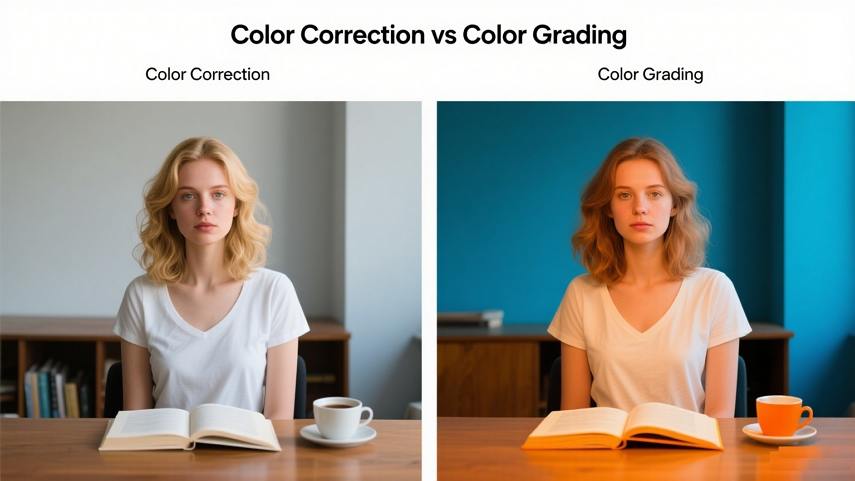
Part 1. What is Color Correction?
What is color correction? Color correction is the process of adjusting your video's original colors to make them look natural, balanced, and true to life. The primary goal is to fix issues such as exposure problems, incorrect white balance, and uneven contrast.
Color correction ensures that every shot in your video matches in tone and brightness, which is especially important when combining footage from different cameras or lighting conditions.
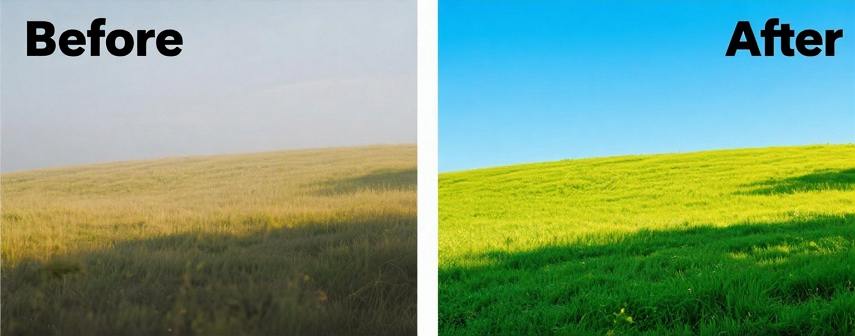
Common uses of color correction:
- Adjusting brightness and contrast for consistency
- Correcting skin tones or other key elements
- Matching footage from different cameras
Before-and-after examples clearly show how color correction fixes issues and improves visual quality without changing the creative style.
Part 2. What is Color Grading?
What is color grading? Unlike color correction, color grading is the process of creatively enhancing your video to establish a specific mood or style. After correcting the colors, grading allows you to manipulate tones, saturation, and contrast to achieve cinematic effects.
Color grading meaning: It is the art of shaping your video's visual tone to convey emotion, reinforce storytelling, and create a signature look.

Examples of color grading:
- Cool blue tones for a futuristic or somber mood
- Warm golden tones for romantic or nostalgic scenes
- High-contrast, desaturated looks for gritty storytelling
- Black and white conversion for a classic cinematic feel
Color grading transforms raw footage into visually compelling content that aligns with your creative vision.
Key Differences Between Color Grading and Color Correction
Aspect
Color Correction
Color Grading
Purpose
Fixes color and exposure issues
Creates a specific style or mood
Process
Technical, accuracy-focused
Creative, emotion-focused
Usage
Ensures consistency across clips
Enhances storytelling and aesthetic
Result
Natural, realistic colors
Stylized, cinematic visuals
In short, color correction vs grading is about foundation versus creativity: correction ensures your video looks right, while grading makes it look extraordinary.
Part 3. How AI Tools Simplify Color Grading and Correction
Modern AI tools have transformed the way creators handle color grading vs color correction. Instead of manually adjusting every clip, AI analyzes your footage and applies intelligent enhancements, combining technical accuracy with creative styles.
- Automatically balance exposure, white balance, and contrast
- Apply cinematic grading styles or moods instantly
- Reduce time spent on tedious manual adjustments
- Make professional-quality color workflows accessible to beginners
By leveraging AI, creators can achieve consistent results, maintain creative flexibility, and focus more on storytelling rather than technical color adjustments.
HitPaw Vikpea AI Color: Your All-in-One AI Video Color Tool
Among AI tools, VikPea is a comprehensive AI video enhancer designed for creators, editors, and filmmakers who want professional results without complex software. Beyond its AI color capabilities, it also enhances video quality, supports 4K upscaling, batch processing, and works with multiple video formats-while remaining easy to use.
The AI Color is Vikpea's advanced AI-powered video color tool designed to simplify and elevate the color workflow for creators of all levels. Whether you want to correct color issues, apply cinematic grading, or bring black-and-white footage to life, AI Color provides intelligent solutions that save time and deliver professional-quality results.
- SDR to HDR: Enhances contrast, brightness, and color depth to make standard videos look cinematic.
- Colorize: Adds realistic colors to black-and-white videos, restoring natural tones for skin, sky, and landscapes.
- Color Enhancement: Boosts color vibrancy and balance while keeping natural tones, improving saturation and contrast subtly.
- Low-light Enhancement: Brightens dark footage, reduces noise, and restores hidden details for clearer night scenes.
Other Key Features
- Video Quality Enhancement: Upscale videos to 4K for sharper visuals
- Batch Processing: Process multiple clips at once for efficiency
- Multi-format Support: Compatible with MP4, MOV, and other common formats
- User-Friendly Interface: Easy to operate, even for beginners
How to Color Grading Videos in VikPea
Step 1: Upload Your Video
Open VikPea after installation. Choose AI Color from the sidebar and upload your footage.
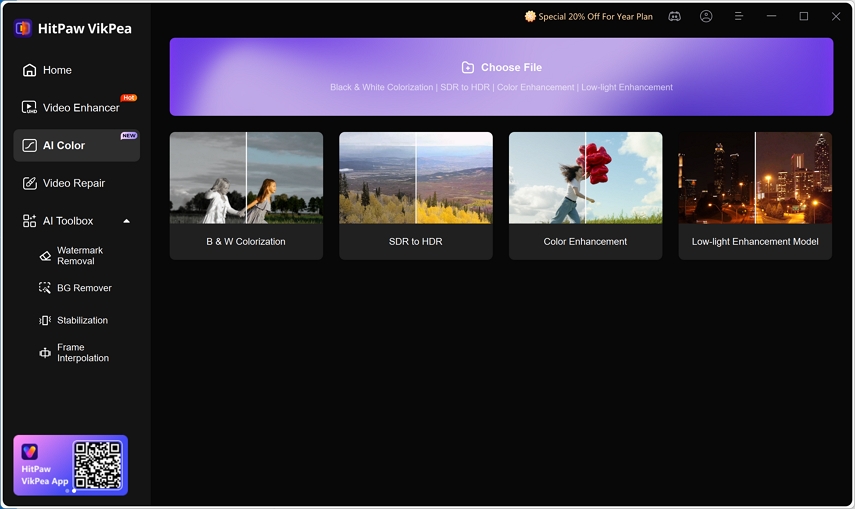
Step 2: Select the AI Color Module
Choose an AI color model according to your video type. Choose SDR to HDR to enhance dynamic range for cinematic clarity, use Color Enhancement to boost vibrancy and balance.
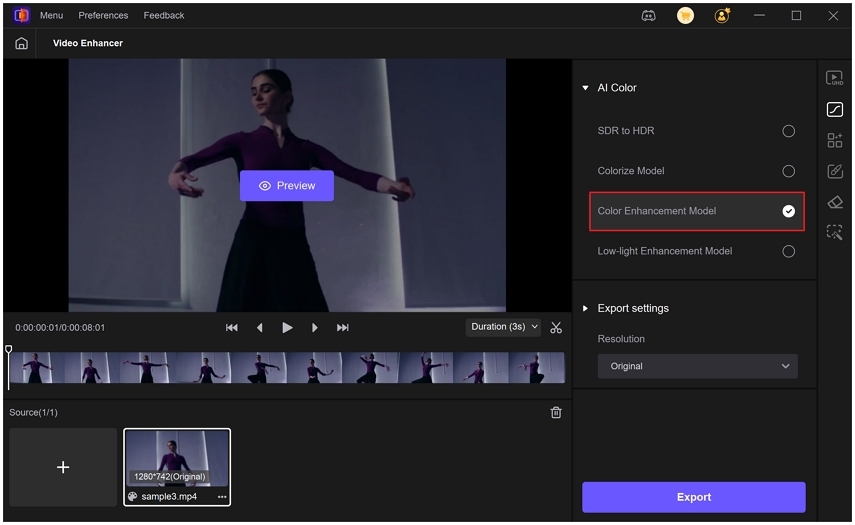
Step 3. Export Settings
You can set up the resolution, bit rate, format and output folder for the enhanced video.
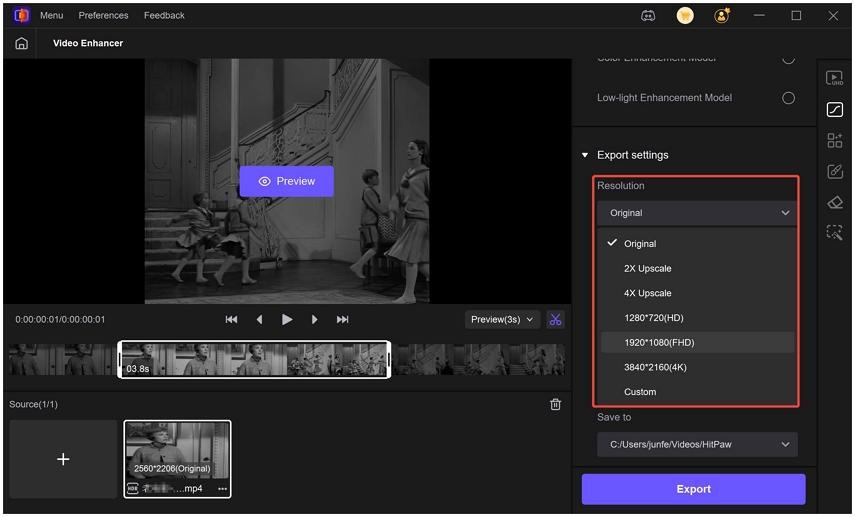
Step 4: Preview and Fine-Tune
Compare before-and-after frames. Optionally adjust brightness, contrast, saturation, or style intensity for your desired look.
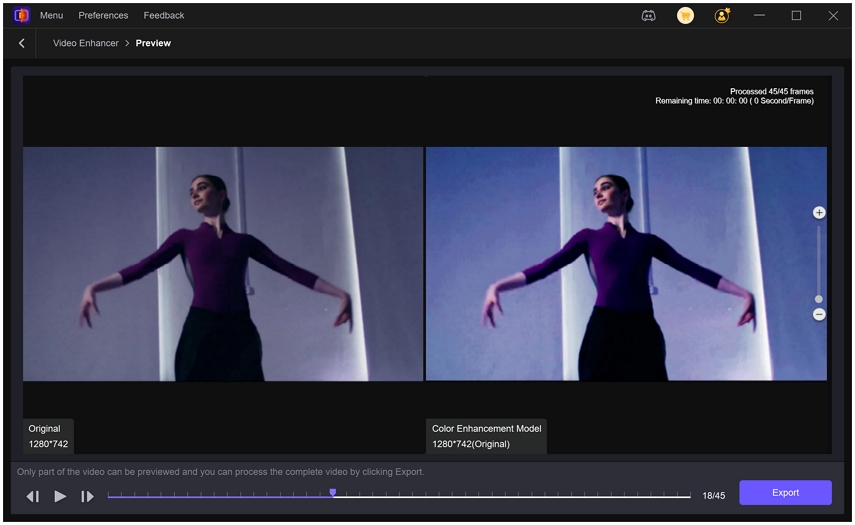
Step 5: Export Video
Click Export button to start processing the entire video.

By following these steps, creators can efficiently achieve professional-level color correction, grading, and video enhancement with minimal effort.
Part 4. FAQs
It's not recommended. Color correction ensures your footage has balanced colors, providing a solid foundation for effective color grading.
Absolutely. AI tools like HitPaw VikPea AI Color simplify the process, enabling beginners to achieve professional-quality results quickly.
AI-powered tools analyze grayscale footage and automatically apply realistic colors, saving hours of manual work while maintaining natural-looking results.
Conclusion
Understanding color grading vs color correction is crucial for anyone serious about video production. Color correction provides a clean, consistent base, while color grading adds mood and style, turning ordinary footage into visually stunning content. Tools like Vikpea AI Color empower creators to perform both tasks efficiently, colorize black and white videos, and even enhance SDR footage to HDR with ease. Mastering these techniques, along with AI assistance, can elevate your videos from standard to cinematic.
Leave a Comment
Create your review for HitPaw articles









